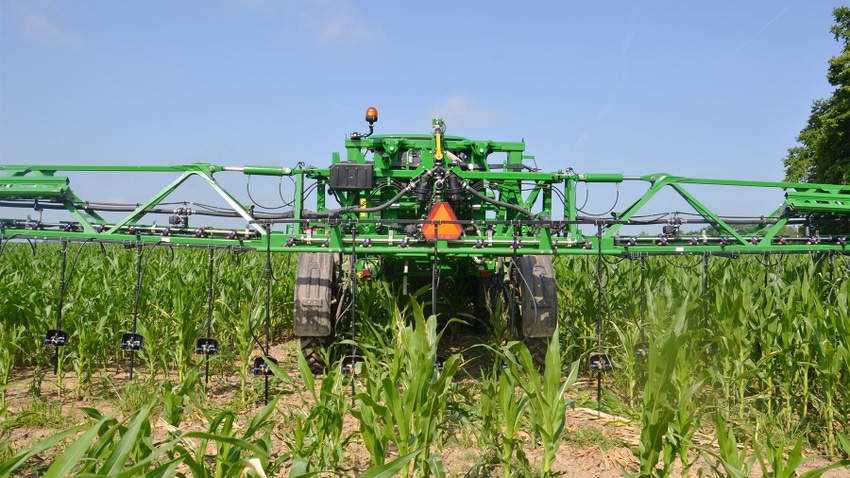April 22, 2024

Stress testing involves a range of techniques that can be used to assess the vulnerability of a farm’s balance sheet, cash flow and repayment capacity to changes in revenue and costs. Stress testing can be an extremely useful tool to examine strategies for dealing with lower prices, higher costs, lower government payments, asset purchases and changes in loan terms.
Here, a farm in west-central Indiana is used as an example to examine the feasibility of replacing equipment that is wearing out this year.
Background on case study
The case farm has 3,000 acres of corn and soybeans, with 2,090 acres rented and 910 acres owned. After averaging a net farm income per acre of $350 and $225 in 2021 and 2022, respectively, income dropped to $25 in 2023. Using trend yields and projected crop prices and costs provides a projected net farm income for 2024 of negative $50 per acre, or $75 per acre lower than actual net farm income in 2023.
Sensitivity analysis could be used to examine the impact of higher crop yields, higher crop prices or lower costs on net farm income per acre. For the farm to receive the same net farm income per acre in 2024 as it did in 2023, crop yields would need to be 10% above trend yields.
In addition to examining the impact of changes in revenue and costs on net farm income per acre, it is useful to examine the impact of these changes on the farm’s repayment capacity and replacement margin. The latter can be used to gauge whether the farm has sufficient funds to purchase equipment this year.
Repayment capacity, such as capital debt repayment margin, can be computed by adding off-farm income and depreciation to net farm income, and then subtracting taxes, owner withdrawals and principal payments on machinery, buildings and land.
The replacement margin is determined by subtracting cash used for capital replacement, which can be proxied by multiplying economic depreciation by 1.15, from the capital debt repayment margin. Cash used for capital replacement in 2024 is $257,135 for the case farm.
Can farm replace any machinery?
Under the base scenario, which is trend yields, the capital debt repayment margin is minus $62,635, and the replacement margin is minus $358,345. Under this scenario, the case farm would need to draw down cash to make principal payments, so it is unlikely to replace any machinery this year.
If crop yields are 10% above trend, the capital debt repayment margin would increase to $166,960, indicating that the farm has more than sufficient funds to make principal payments. However, under this scenario, the replacement margin would still be negative, again suggesting that the case farm may want to wait until next year to replace equipment.
Stress testing can be used to examine the sensitivity of net farm income and repayment capacity to changes in revenue and costs. Given the likelihood of tight margins, stress testing is particularly important this year. Stress testing can also be a key tool in the development of contingency plans.
Use it to answer these questions: How is our farm going to cover principal and interest payments if net returns are relatively low in 2024? Do we have enough liquidity to cover potential losses, or will we need to consider taking on more noncurrent debt or selling assets?
Read more about:
Farm FinancesAbout the Author(s)
You May Also Like






